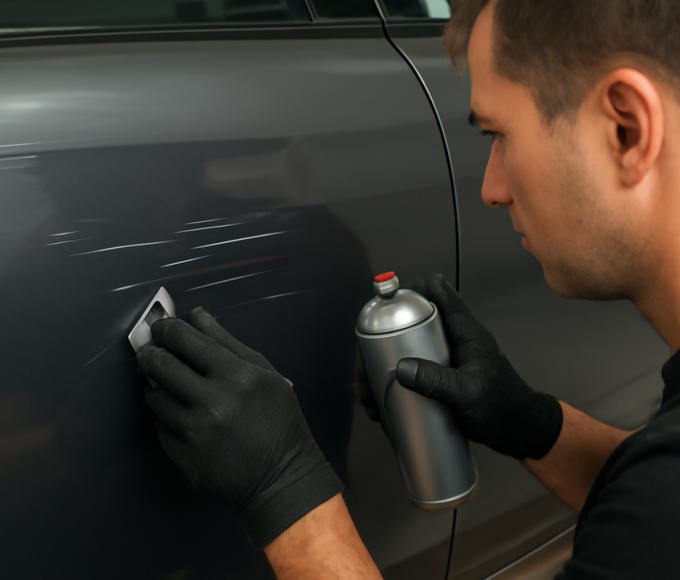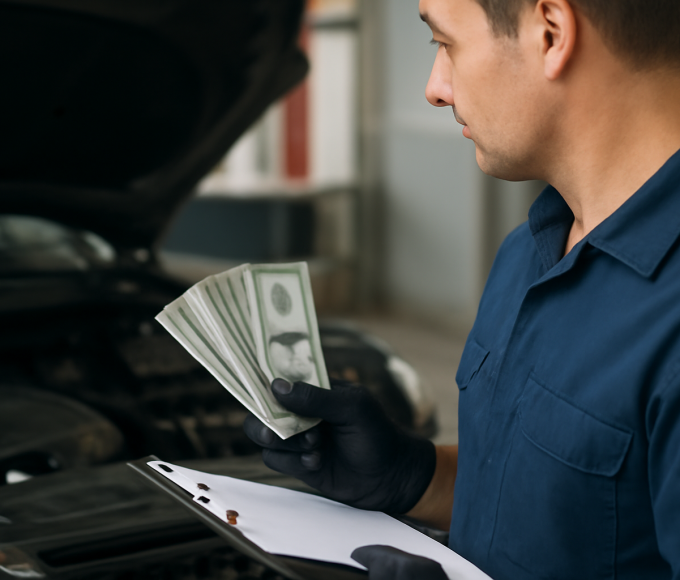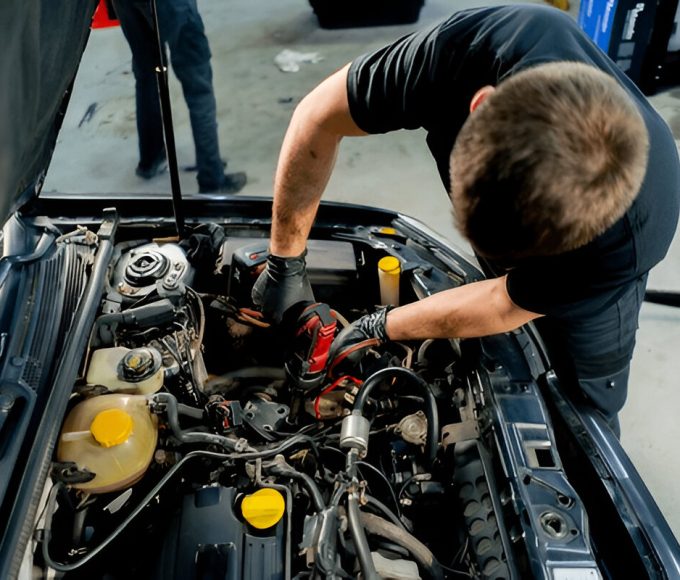If you enjoy cars and have years of experience counseling other drivers on staying calm, you have probably heard, “Does window tint keep your car cooler?”. This is about more than appearances, even if it makes a fashion statement. It’s all about giving real defense against the damaging UV rays and the sun’s heat. This blog will address the validity, operation, and purpose of window tint as related to the interior comfort of your car. This will also offer helpful advice to help you make a wise choice.
Definition of Window Tint
Tinted glass covers a vehicle’s interior in a thin layer. It aims to lower the possible UV, visible, and infrared light penetration through windows. Among the several hues you might pick are ceramic, colored, metallic, and carbon variants. Though they look distinct, they all prevent the automobile’s inside from overheating, breaking, or fading under the sun.
Moreover, many drivers choose to utilize window tints to improve privacy. People find seeing what is inside their car more difficult when less light comes through the windows. Though that’s an extra benefit, most people use window shades to keep the inside cooler and to protect the upholstery from damaging solar rays.
Window Tint: How Does It Work?
Tinted windows may reflect or absorb portions of the solar spectrum. Differently composed films can have a broad spectrum of heat-blocking effects. Adding a ceramic tint can help your car reflect infrared radiation, reducing the oppressive heat within it.
Moreover, quality coatings might block up to 99% of UV rays, protecting your car’s upholstery from harm. Since they are not immediately exposed to sunlight inside your automobile, dashboards, leather seats, and leather seats are less likely to fade or degrade with time.
Does Window Tint Help Your Car Stay Cooler?
Indeed, it does—to some extent. Indeed, window tint keeps heat out of your car, but the degree of difference it produces will rely on the type of tint you choose. A few suitable coatings can cut solar heat input by about half to two-thirds. That is a striking difference, especially on sweltering summer days. Remember, though, that no tint can completely block off heat. Even on a 100-degree day, your automobile will remain toasty if parked directly in the sun. However, a tint can significantly improve its tolerability. Many drivers find that they don’t have to crank up the AC quite as much, which can result in better comfort and less gas money spent.
Surprising Facts About Window Tint
- UV Protection for Skin: Dermatologist research suggests that high-quality tints may shield your skin from harmful ultraviolet radiation (UVR) even when you’re inside your vehicle. Sunburn is more likely in areas where extended hours of driving without UV protection are common.
- Reduced Internal Temperature: Tinted windows allow your air conditioner to function more efficiently. This seemingly small advantage might add up during long trips. Add
- Shatter Resistance: Several tints include a protective coating to reassemble broken glass as a safety measure.
Practical Tips for Choosing the Right Tint
Given the diversity of possibilities, choosing the correct hue may initially seem intimidating. But if you choose wisely, you may save money and enjoy long-term comfort.
Consider these practical recommendations:
- Verify Regional Regulations: State or national tint regulations differ. Find out how dark you can legally go before you spend money on a certain degree of darkness.
- Keep Heat Rejection Ratings in Mind: Look for the film’s TSER percentage, and the rejected solar energy proportion. A greater TSER indicates improved heat-blocking capabilities.
- Protect Your Skin from the Sun: You and the inside of your vehicle are safe with films that claim to block 99% or more of ultraviolet light.
- Spend Money on Professional Installation: When misapplied, even the finest film has the potential to bubble or peel. Consult with experts for a finish that lasts and stays clean.
Common Misconceptions About Window Tint
Window tint is often misunderstood despite its benefits. To assist you in making a well-informed choice, we will debunk some common misconceptions:
- The tint is only about privacy.
The tint is not only for just personal privacy. Window tinting has several benefits, including increased privacy, decreased interior heat, and protection from dangerous UV rays.
- Darker is always better.
Increased heat rejection is not necessarily associated with a darker color. Cheaper, dark-dyed films can’t compare to ceramic tints, even when tinted a lighter hue.
- Window tint will make it too dark to see at night.
If you tint the windows, it will be impossible to see at night. A well-chosen hue shouldn’t compromise your evening visibility. Even in dim light, high-quality films are engineered to preserve clarity.
Do’s and Don’ts to Stay Cooler
There are additional steps you can take to ensure your car remains cool. Although window tint plays a crucial role, combining it with other practices can optimize comfort:
Do:
- Whenever you can, park in a shady area.
- To protect yourself from the sun, install reflective windshield blinds.
- Before you switch on the air conditioner, make sure there is enough fresh air circulation.
Don’t:
- Disregard regular upkeep. Tinted windows work well with an energy-efficient HVAC system.
- Apply tints that are not authorized. A lack of light through the windows can lead to expensive penalties and even safety issues.
- No need to clean regularly. Tinted film can have its lifetime and clarity diminished by dirt.
Heat Reduction Data from the Real World
Several studies have shown that when left parked in the sun, the interior of a regular car without tint may rapidly reach temperatures beyond 130°F. The interior temperatures of tinted automobiles are typically 15–25 degrees lower than those of un-tinted vehicles; the difference depends on the tint grade and film quality.
In addition, after you switch on the air conditioner, the cabin cools down much quicker. This quick-cooling feature might be useful if you’re often on the go for quick errands or picking up the kids from school.
Factors Relating to Legality and Safety
It is recommended that local legislation be checked before window tinting. The amount of darkness that can be tinted on the front windshield and side windows is restricted in some regions. Furthermore, certificates or markings indicating conformity with the legislation may be required on tinted windows in certain places.
Additionally, be sure to keep yourself well visible. In low light or during inclement weather, a vehicle with an excessively dark tint may be less visible to pedestrians and cyclists. It is crucial to find a middle ground that is both legal and safe.
Window tinting is more than an aesthetic choice for those hot summer days. It may make your car’s interior significantly cooler, protect your skin from the sun, and extend the life of the upholstery. A little window tint won’t make much difference compared to clear windows, but it will keep your car cooler in the summer.
Stay Shaded, Stay Chill!

















Leave a comment